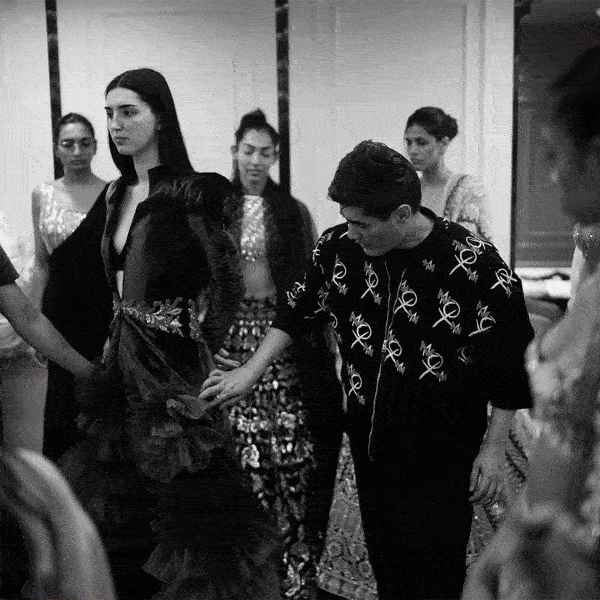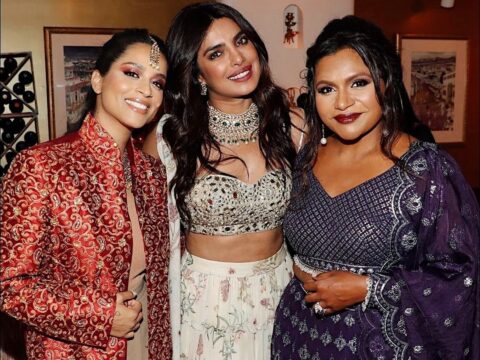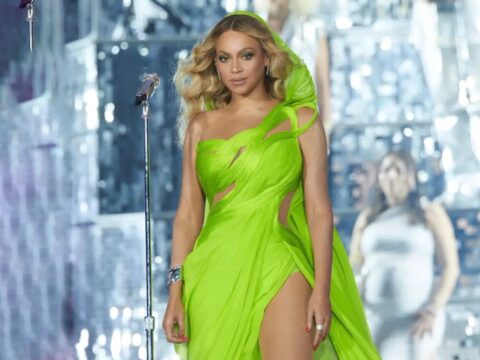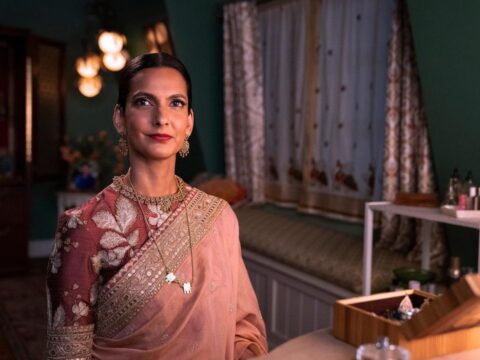The inauguration of the Nita Mukesh Ambani Cultural Centre (NMACC) saw the likes of Zendaya, Tom Holland, Gigi Hadid, Penelope Cruz, Nick Jonas, Law Roach and more descend to Mumbai for its grand gala reception. The star-studded affair also celebrated the opening of the ‘India in Fashion’ exhibition at NMACC, curated by Hamish Bowles, that takes its viewers through the extensive (and often undermined) journey of Indian craftsmanship, textiles and design.
Befitting the occasion, celebrities joined hands with household names in the Indian fashion industry designers to grace the red carpet; Gigi Hadid wore a resplendent chikankari sari and a bejewelled golden blouse by Abu Jani-Sandeep Khosla while Zendaya stunned in a sweeping custom Rahul Mishra design that sparkled like the midnight sky.
While the representation of Indian fashion at the NMACC is an example closer to home, last year’s Navratri and Diwali celebrations were also witness to the best of Indian fashion - albeit outside the subcontinent. There is a widespread adoption of our festivals in the US, UK and other European countries, by members of the Indian diaspora, international celebrities and politicians alike. US Vice President Kamala Harris turned hostess to bring in Diwali at her official residence with prominent Indian Americans in attendance; Rishi Sunak attended a Diwali reception at Downing Street, London just days after becoming the first Britain Prime Minister of Indian origin. 2022 was a turning point for Indian representation in positions of power and influence across the world; the domino effect of which has led to greater demand and relevance of our country’s fashion assets.
Add to that – desi celebrities making waves in the US entertainment industry such as Priyanka Chopra Jonas, Deepika Padukone, Lilly Singh, Mindy Kaling and Liza Koshy. All these opportunities combined have led to an uptick in the showcase of Indian fashion – Manish Malhotra, Papa Don’t Preach’s Shubikha Sharma, Gaurav Gupta and other designers are now household names and on speed dial when it comes to sourcing requests for many celebrity stylists in the US. A-listers such as Paris Hilton, Naomi Campbell, Chrissy Teigen and more are opting for bold, vivid lehengas, sarees or Indian fusion-wear to don at festive celebrations and for promotional events.
But what does this often ‘one-time’ representation really signify in terms of Indian fashion’s progress in the global space? Is an international celebrity choosing to don an embellished saree with motifs on 1 out of 365 days in a year doing enough to create a new narrative or is it feeding into the colourful clichés that often dominate this conversation?
“Fashion’s relationship with celebrities is a complicated one. They both feed off each other, yet can often offend each other. I think anything that highlights the creative talent of Indian design is welcome, especially now as Indian designers look to set up flagships on foreign shores and more Indian labels are being included in the schedules of international fashion weeks. And when attending Diwali functions or Indian weddings, I feel it is also respectful that attendees wear clothes that are appropriate to the function”, says Sujata Assomull, a Dubai-based fashion journalist and author.
However, weighing in on the cons, Assomull further adds – “There are times when international celebrities wear Indian designer clothes, and it almost seems like a costume which is an issue - when they make India seem like the country of Maharajahs and snake charmers. I also wish that the celebrities would not just wear Indian designer clothes for “Indian” functions, that they re-wear the pieces at other events, perhaps styling them in a way that has a global feel. Indian fashion is where cultural dressing thrives and also moves with trend, and this is the story that needs to be highlighted. That Indian clothing is not just for function but can fuse into an everyday wardrobe.”
While the word ‘representation’ in this case may seem like two sides of the same coin, these brief appearances of international A-listers in South Asian clothing is more momentous than clout for the respective brands and designers – particularly those looking to expand internationally in the midst of what is a competitive market.
In Netflix shows such as Never Have I Ever and the Bridgerton series, the costume designers, stylists and the cast work in tandem to ensure an apt showcase of South Asian brands to celebrate their heritage. In Poorna Jagannathan’s (Devi’s mother on Never Have I Ever) InStyle interview, the actor is particularly vocal about wearing different textiles, prints and styles from the likes of new-age brands such as Raw Mango, Ikai and Bodice to display the versatility of Indian fashion.

Manish Malhotra, veteran Indian couturier with decades of experience in the fashion and film industry, is of the opinion that this sort of representation can go a long way than fifteen minutes of fame when propelled and sustained in the right way. “I represent an India that's all about the people, progress, and a strong purpose to protect and preserve the craft and its artisans. Our origins are so strong that globalising the Indian handloom does not necessarily mean propelling it to conform to modern times but instead merging the traditions, the refinement, and the impact of the handcrafted creation with the identity of today's globalised generation. The endless love of our patrons across the country and extended border has called forth for more demand, and our brand yearned to fulfil every demand, desire, and dream to wear an Indian couture brand on the international borders. We already have an established clientele in the US and have expanded even more through our e-commerce and recently launched a virtual store medium. However, we’d love to foray into the country's market by strengthening our physical reach through timeless, classic, and responsible collections that tell the authentic stories of Indian craft and artisans.”



